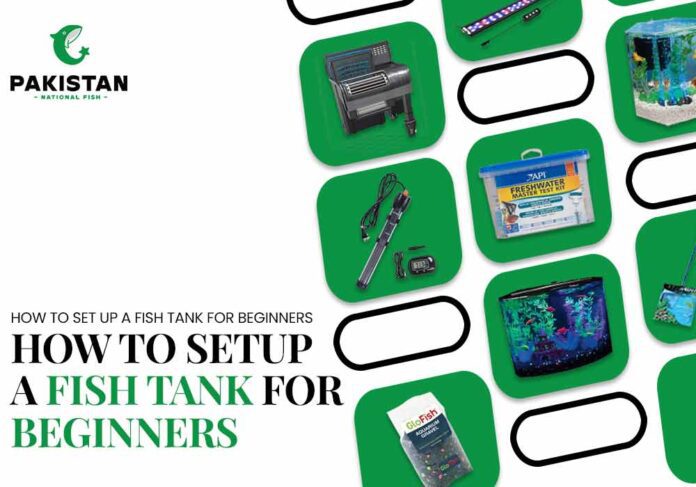When establishing a new fish aquarium, there’s a lot of information on the internet that can be intimidating. It would be great if a knowledgeable aquarist could walk you through the complete guide to setting up a aquarium. As we outline our top tips for creating the ideal habitat for your new pet fish, please follow along.
Please take these instructions seriously in order to prevent the most typical mistakes that novices make, even though some of them may appear too complex. Having operated a fish store for many years, we’ve discovered that it’s critical for new hobbyists to succeed immediately. The likelihood that someone will completely quit keeping fish increases with the number of blunders they make.
Table of Contents
CHOOSING THE RIGHT AQUARIUM SETUP
Steps for Aquarium Setup:
- Select Tank Size: A 5-gallon setup is suitable for small fish, but larger tanks provide more stable environment.
- Choose Fish: Fish that match the size of the aquarium and are compatible with each other.
- Purchase Aquarium Equipment: Include a filter, heater, light, thermometer, and air pump for oxygenation.
- Add Aquarium Decorations and Substrate: Add ornaments, stones, gravel, and plants to enhance the aquarium’s visual appeal and create hiding spots for fish.
- Cycle the Aquarium: Cycle the water to establish a healthy ecosystem, breaking down harmful substances like ammonia and nitrites.
1 Gallon Hexagon Shape Tetra Bubbling LED Aquarium Kit
- Color-changing light disc
- Hexagon-shaped design for betta fish.
- Air pump-driven tetra whisper internal power filter.
- Clear canopy with hole for easy feeding.
- Age range: all life stages.
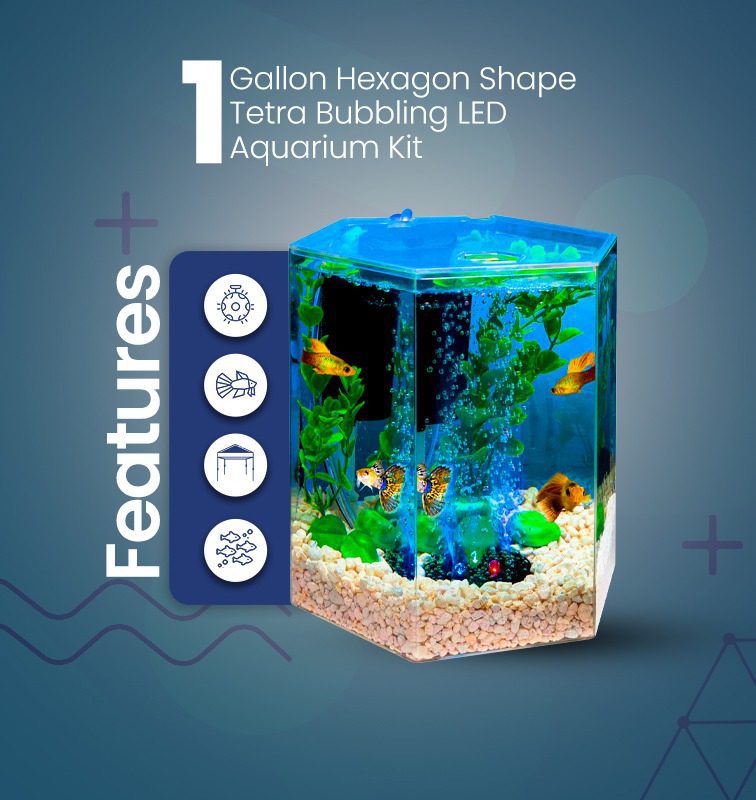
HOW MUCH LONGER DOES IT TAKE TO SET UP A 5-GALLON AQUARIUM?
AQUARIUM SETUP: FRESHWATER VS. SALTWATER
Setting Up a Freshwater Aquarium:
Setting Up a Saltwater Aquarium:
BEFORE BUYING FISH: A SHOPPING LIST
Aquarium
- Find the ideal location for the aquarium.
- The tank should be on a hard, flat, waterproof surface or aquarium stand.
- Avoid direct sunlight, air conditioning, and doors leading outside.
- Find a quiet environment away from high traffic areas, flashing TV screens, or lighting.
- Ensure the fish tank is near an electrical outlet and a water source for easy water changes.
5 Gallons GloFish Crescent Aquarium Kit
- Tetra whisper bio-bag filter cartridge
- Hidden blue LED lights
- Filter cartridge
- Sleek black hood
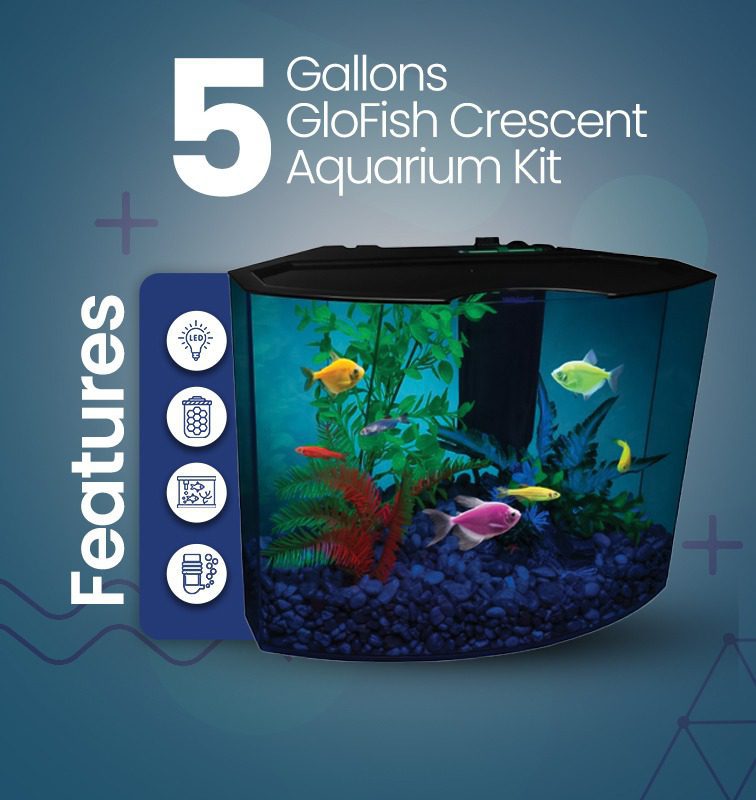
Rimmed, Glass Aquarium
- Rimmed, glass fish aquariums are cost-effective and are preferred for beginners and veterans.
- Glass aquariums are cheaper, less susceptible to scratching, and come with a rim to level out unevenness.
- Acrylic aquariums are more expensive but ideal for large volume tanks.
- Acrylic tanks are designed to be supported on their entire bottom panel.
Aquarium Lid
- Tank lids save money in the long run by minimizing heat and water loss and protecting fish from jumping out.
- Glass lids are cheap and clear for viewing purposes.
- Acrylic lids are more costly and tend to droop into the water over time.
Heater
- Most freshwater pet fish prefer warmer, tropical temperatures between 74-80°F.
- An adjustable heater is preferred for changing the water temperature.
- Choose a fish tank heater with approximately 5 watts of heat per 1 gallon of water.
- For bigger aquariums, it’s better to purchase two 100W heaters.
Aquarium Fish Tank Heater, 100W Suitable for Marine Saltwater and Freshwater
- 100W heater for 10-20 gallons aquariums.
- Length: 9″
- Temperature adjustment area
- 68-89°F for aquatic climate control.
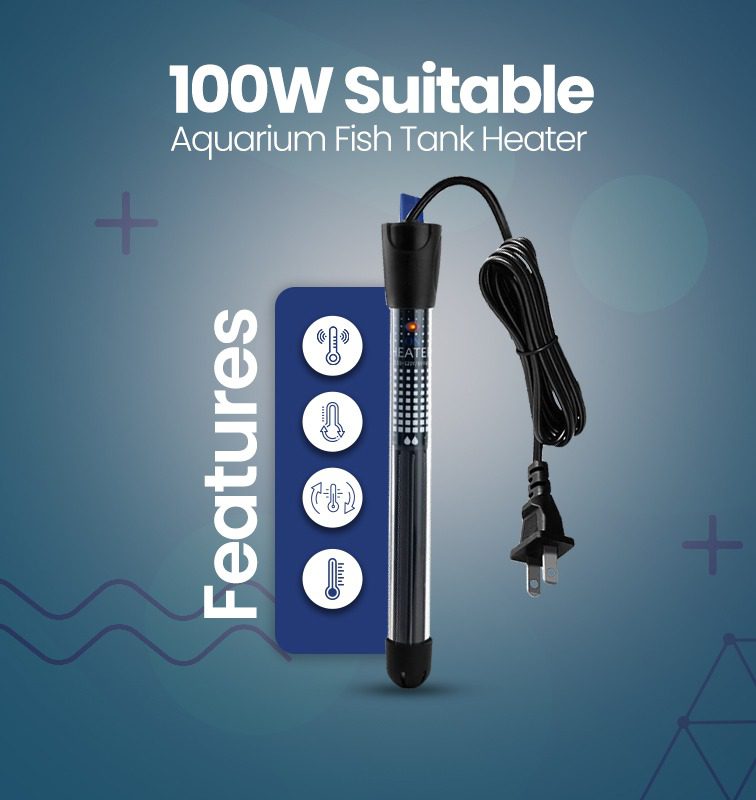
Filter
- For beginners, don’t start with a canister filter.
- Sponge filters are recommended due to their gentle flow and reliability.
- The Aquarium Co-Op sponge filter comes with the Easy Flow curved uplift tube.
Black MarineLand Penguin Filter, 200GPH (PF0200B)
- Rotating bio-wheel
- 200 power
- Multi-stage filtration
- Available in five sizes
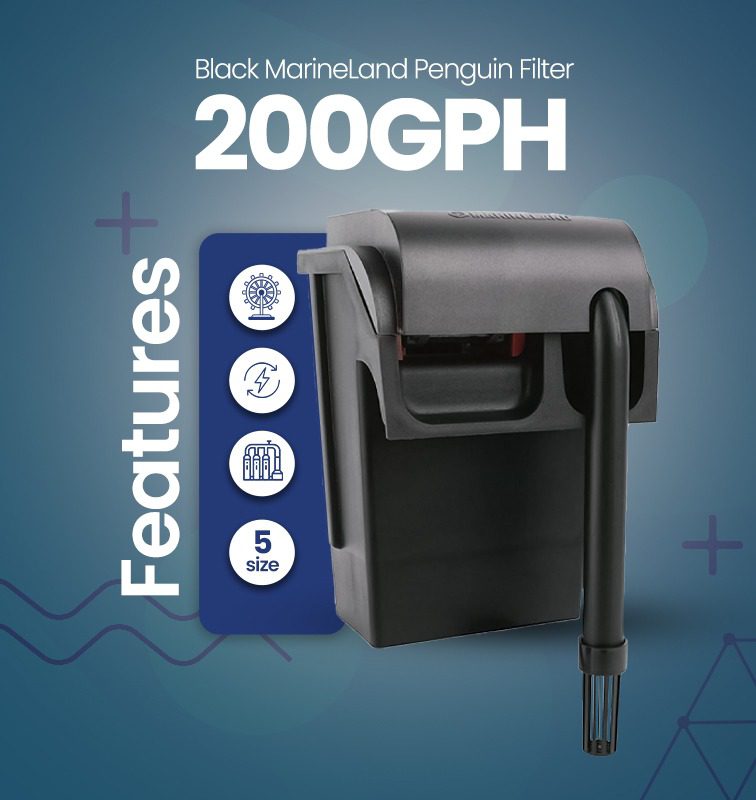
Lighting
- Lighting is mostly a concern for those keeping live aquatic plants.
- If no aquarium plants are present, use a fish tank kit with a light or choose an appropriately sized aquarium hood with a built-in light.
Full Spectrum Aquarium Light Hygger 9W for Freshwater Fish Tank (12-18 Inch)
- Ultra Bright Led Light
- 3 Light Color Modes
- Adjustable Brackets
- Adjustable light brightness from 100% to 10%
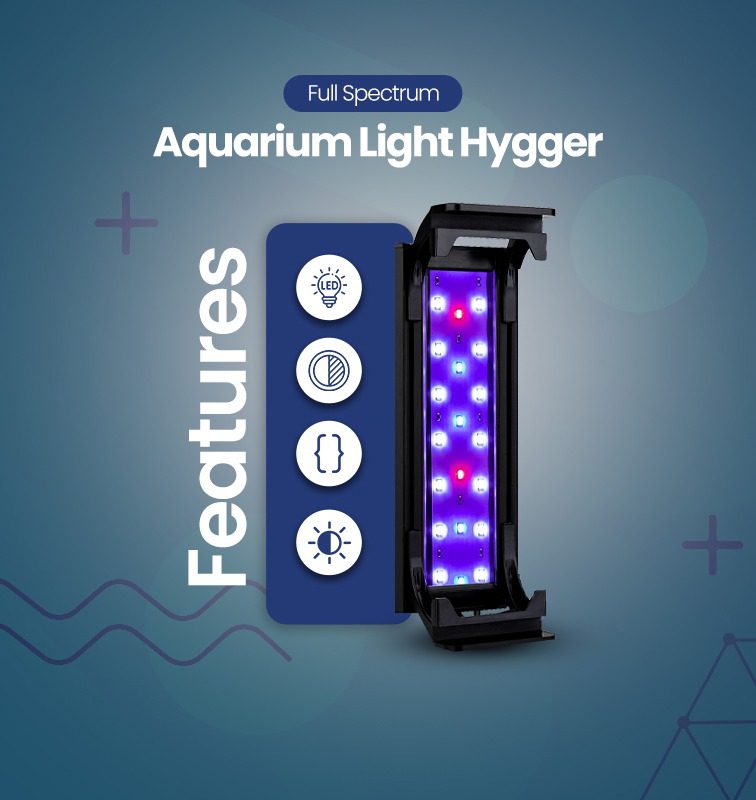
Air Pump and Oxygenation
- Maintains adequate oxygen levels in heavily stocked aquariums.
Test Kits
- Monitors ammonia, nitrites, nitrates, and pH levels for fish health.
Aquarium Net
- Essential for catching, transferring, cleaning, and moving fish during water changes.
Marina Blue Fine Nylon Aquarium Net
- High-quality nylon woven mesh
- Dimensions: 3”x3” (7.6 cm x 7.6 cm)
- Handle: 10” long for easy reach

Substrate and Decorations
- Substrate: Ground covering on the bottom of the fish tank, commonly includes aquarium gravel, sand, and plant substrate.
- Aquarium backgrounds: Hide wires, tubing, and shadows from view.
- Darker colors like black are preferred for better visibility and less noticeable algae.
Other Aquarium Accessories
- Water dechlorinator: Disinfects tap water, making it safe for fish.
- Fish food: High-quality fish foods are recommended.
- Aquarium water test strips: Helps determine if poor water quality is causing fish illness.
- Aquarium siphon: Uses a hose with a bucket to vacuum substrate and remove collected fish waste.
AQUARIUM SETUP GUIDE
- Wash aquarium gravel, rocks, and ornaments with warm water.
- Fill the tank about one-third full with room temperature water.
- Add a water conditioner Solution to de-chlorinate the water.
- Connect the airline tubing from the air pump to any air outlets inside the tank.
- Arrange live and/or plastic plants in the aquarium.
- Plant roots gently below the surface of the gravel, leaving the crown exposed.
- Add the rest of the water and fill the tank to the bottom of the top frame.
- Set up a filter and “cycle” the tank.
- Secure the submersible heater near the water flow and place the thermometer as far away from the heater.
- Plug in the air pump, power filter, and heater and start them up.
- Check the air outlets and adjust the settings.
- Adjust the heater to the proper temperature.
- Wait 24 hours to ensure all equipment is working properly before adding fish.
- Check the conditions and temperature after a few hours.
- Check the pH and hardness of the water.
HOW MUCH TIME DOES IT TAKE TO GET FISH INTO A NEW TANK?
MAINTAINING AN AQUARIUM: ESSENTIAL TO A HEALTHY TANK
A long-lasting aquarium system requires routine upkeep. Here’s how to maintain optimal condition in your aquarium:
- Changes in Water
By eliminating surplus trash and reintroducing vital minerals, regular water changes contribute to the preservation of water quality. It’s a good idea to change 10–20% of the water each week.
- Cleaning of Filters
Filters may become clogged with particles over time. To make sure the filter media keeps functioning properly, clean or replace it as the manufacturer advises.
- Water Chemistry Testing
Check the levels of ammonia, nitrite, nitrate, and pH in your water on a regular basis. Make sure that these levels remain within your fish’s safe range.
- Feeding
The secret to a healthy aquarium is proper feeding. Excess waste from overfeeding might degrade the quality of the water. Typically, you should feed your fish once or twice a day, depending on their size and species.
- Medications
Even with your best efforts, fish can occasionally become ill. Keep the right medication on hand at all times for common fish illnesses like fin rot or ich. Particular fish or invertebrates may be adversely affected by particular medications, so be cautious to apply the appropriate remedies for your species.
API Freshwater Aquarium Master Test Kit 800-Test
- 7 bottles, 1 color card, 4 tubes.
- Monitors water quality and prevents invisible issues
- Monitors 5 vital water parameters
- Designed for weekly monitoring and problem-solving

FISH TANK FACTS
- Initial cloudiness fades over time due to ammonia spikes.
- Wait for tank cycling for a few weeks before adding fish.
- Follow specific process for immediate fish addition.
- Maintain consistent tank water temperature to prevent stress.
- Recommended tank heater for tropical and cold-water fish.
- Tropical fish prefer 22-27 Celsius, cold-water fish prefer 22 Celsius.
AQUARIUM DECORATION: A PRACTICAL APPROACH
Creating a comfortable atmosphere for your fish is another useful function of aquarium décor, which goes beyond aesthetics. Ornaments, plants, and stones provide your fish a place to hide, ease tension, and replicate their natural habitat.
- Aims to create a comfortable environment for fish.
- Plants, stones, and ornaments provide hiding places, reduce stress, and mimic natural habitats.
- Live plants like Java Fern, Anubias, and Amazon Sword improve water quality.
- Artificial plants can add beauty and provide hiding spots.
- Rocks, caves, and driftwood create territorial boundaries and hiding spots.
- Substrate, like gravel, sand, or specialized planting soil, forms the base of the tank.
GloFish Aquarium Tank Gravel, 5-Pound Bag
- Available in pink, green, white, black
- Fluorescent accents
- Bask in the glow
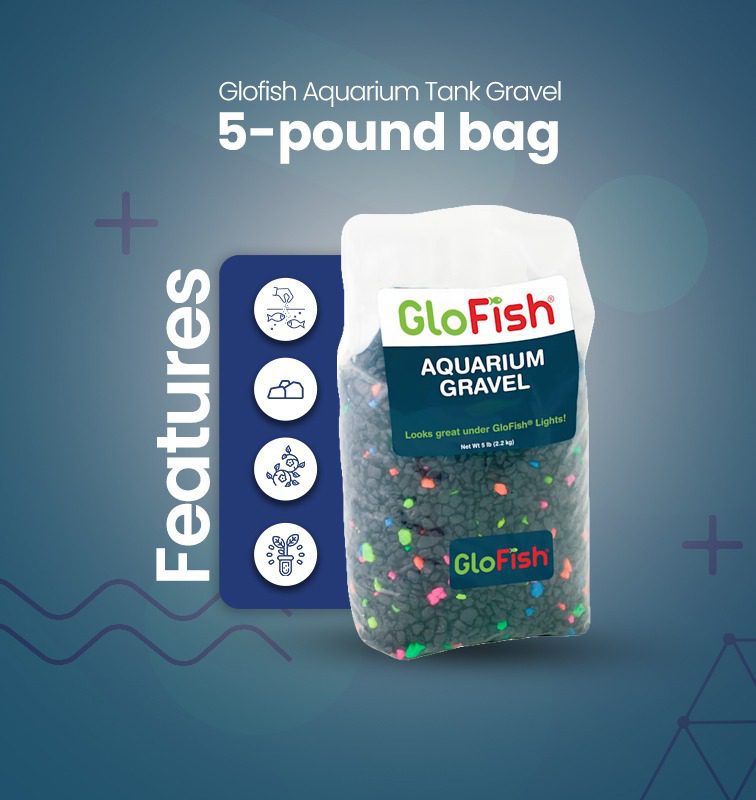
KEY INFORMATION: ADDING FISH TO YOUR AQUARIUM
Fish should be added to your tank gradually to avoid stress and shock. Before releasing the fish, gently add tank water to the bag while the bag is floating in the tank for 15 to 30 minutes to acclimatize the fish.
Different Fish Types for Aquariums:
- Freshwater Fish: Beginners should consider neon tetras, betta fish, guppies, and angelfish.
- Fish for saltwater aquariums: Clownfish, Damselfish, and Gobies are common.
Because some species might be hostile or possessive toward other fish, make sure you do your homework before putting your fish in the tank.


